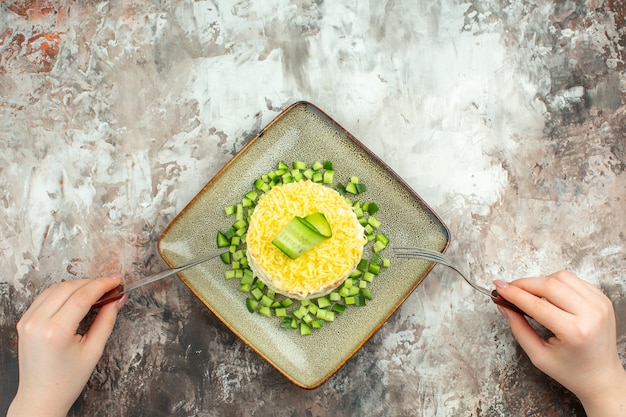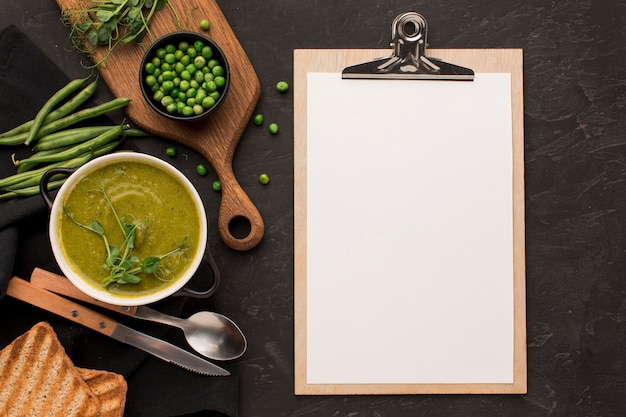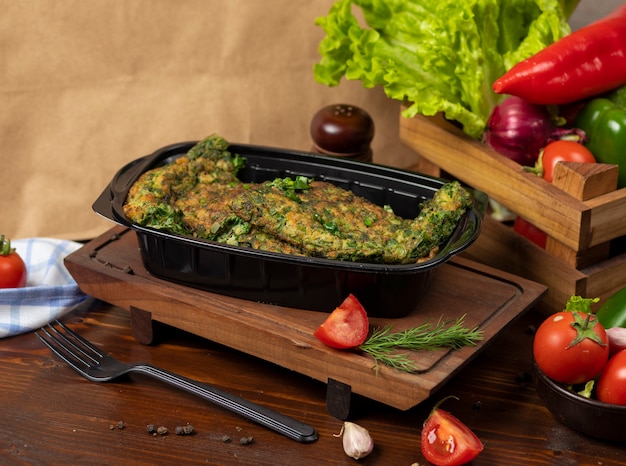mustard greens, with their peppery kick and earthy flavour, are a real treat. But, let's be honest, they can be a bit of a culinary challenge, especially when it comes to cooking time. Getting that perfect balance – tender but not mushy, with a hint of bite – can feel like a real puzzle. Over the years, I've tried all sorts of ways to cook them, from the basic boiling method to more elaborate sautéing and steaming techniques. And let me tell you, it's been quite a journey! So, I thought it's time to share what I've learned and create a simple guide to help you conquer the world of mustard greens.
(Part 1) My Mustard Greens Misadventures: A Confession

I'm not going to sugarcoat it – my first few attempts at cooking mustard greens were, well, disastrous. It all started with a trip to the local market, drawn to those vibrant green stalks, leaves tightly packed and bursting with life. I imagined them transformed into a delicious side dish or even a hearty soup. But, as I stood there, the question lingered: how long do I cook them?
The Great Mustard Greens Mystery
Every recipe I found online had a different answer. Some said 5 minutes, others 20! It was like a culinary roulette wheel, and I was scared of landing on "overcooked mush." I mean, who wants to eat mushy, flavourless greens, right?
My Experiment: A Quest for the Perfect Bite
So, I decided to take matters into my own hands. Armed with my trusty timer, I embarked on a personal experiment, exploring different cooking methods and keeping a watchful eye on those greens. I wanted to find the perfect balance – tender enough to be enjoyable, but with just a bit of that signature mustard greens bite.
(Part 2) Boiling: The Classic Approach

Boiling is the classic way to cook mustard greens, but it's easy to overcook them. Remember, those greens are delicate, and they can go from perfectly crisp to limp in a flash.
Boiling Time Guide: The Key to Success
Here's the breakdown of boiling times, based on my experiments:
- Young, Tender Greens: 5-7 minutes. These babies cook quickly, so keep a close eye on them. You want them just slightly tender, still holding their shape.
- Mature, Larger Greens: 8-10 minutes. These need a bit more time to soften, but don't go overboard! Overcooked greens will be bitter and mushy.
Boiling Tips: Essential Advice
- Use Plenty of Water: This helps ensure even cooking and prevents crowding, which can lead to uneven cooking. Think of it as giving those greens some space to breathe.
- Don't Overcook: Check the greens frequently, and remove them from the water as soon as they reach your desired texture. I love them just slightly tender, with a touch of that peppery bite.
- Shock with Ice Water: This stops the cooking process and helps preserve the vibrant green colour. It also helps lock in that fresh, crisp flavour.
(Part 3) Sauteing: Bringing Out the Flavour

Sauteing mustard greens is a great way to bring out their vibrant flavour and create a delicious side dish. The heat of the pan helps develop their earthy sweetness, and the addition of aromatics like garlic and onions takes them to a whole new level.
Sauteing Time Guide: Mastering the Heat
Here's the guide for sauteing, based on my experimentation:
- Young, Tender Greens: 3-5 minutes. These will cook quickly, so keep a close eye on them. You want to catch them before they become too soft.
- Mature, Larger Greens: 5-7 minutes. They need a bit more time to soften but don't let them sit in the pan too long.
Sauteing Tips: Bringing Out the Best
- Use a Large Pan: This allows the greens to cook evenly and prevents overcrowding. Give them plenty of room to move around.
- Add a Bit of Fat: A small amount of oil or butter will help prevent sticking and add richness to the greens. It also creates a beautiful, slightly crispy texture.
- Stir Frequently: This ensures that the greens cook evenly and prevent them from burning. Think of it like a little dance, keeping them moving and happy in the pan.
- Season to Taste: Salt, pepper, garlic, and a squeeze of lemon juice can elevate the flavour of your mustard greens. Get creative and experiment with different seasonings!
(Part 4) Steaming: The Gentle Touch
Steaming is a gentler approach to cooking mustard greens, preserving their nutrients and vibrant green colour. It's perfect for those who prefer a lighter, more delicate texture.
The Steaming Time Guide: Preserving the Goodness
Here's what I've learned about steaming mustard greens:
- Young, Tender Greens: 2-4 minutes. These cook quickly, so watch them carefully. You want them tender but still retaining a bit of their crispness.
- Mature, Larger Greens: 4-6 minutes. They will need a bit more time to soften. Don't be afraid to check them every minute or two to make sure they're not overcooked.
Steaming Tips: The Gentle Approach
- Use a Steamer Basket: This ensures that the greens are cooked evenly and prevents them from becoming waterlogged. It also allows for the steam to circulate freely, creating a light and fluffy texture.
- Don't Overcrowd the Basket: Allow the steam to circulate freely for even cooking. This is essential for a consistent result.
- Add a Splash of Water: This will prevent the greens from drying out. Think of it as a little boost of moisture.
- Season to Taste: After steaming, you can toss the greens with a simple dressing or use them in a recipe. They're incredibly versatile!
(Part 5) The Perfect Mustard Greens: Beyond Cooking Time
Now that we've covered the basics of cooking times, let's talk about what truly makes mustard greens perfect. It's not just about the cooking time; it's about finding the right balance of texture and flavour.
The Texture Factor: That Delightful Bite
Mustard greens should be tender but still have a slight bite. They shouldn't be mushy or limp. I find that a good test is to pinch a leaf. If it gives a little resistance but is easily broken, it's cooked perfectly. Think of it like a springy, slightly crunchy texture, not a soggy mess.
The Flavour Spectrum: A Symphony of Taste
Mustard greens should have a bold, peppery flavour that isn't overwhelming. They should also have a slightly earthy sweetness. If they're overly bitter, it means they've been overcooked. If they're bland, they might need a little more cooking time. The flavour should be a complex mix, with a subtle sweetness balancing out the peppery bite.
(Part 6) Putting Your Knowledge to the Test: Delicious Recipes
Now that you're a mustard greens cooking expert, let's put your newfound knowledge to the test. Here are a few recipe ideas to get you started:
Sautéed Mustard Greens with Garlic and Lemon: A Classic Delight
This is a simple and quick way to enjoy mustard greens. The combination of garlic and lemon juice adds a burst of flavour and a touch of brightness.
Ingredients:
- 1 pound mustard greens, washed and trimmed
- 2 tablespoons olive oil
- 2 cloves garlic, minced
- Salt and pepper to taste
- Juice of 1/2 lemon
Instructions:
- Heat the olive oil in a large skillet over medium heat.
- Add the garlic and cook for 1 minute, until fragrant.
- Add the mustard greens and cook, stirring frequently, for 5-7 minutes, or until they are wilted and tender.
- Season with salt, pepper, and lemon juice. Serve immediately.
Mustard Greens Soup: A Hearty and Flavorful Treat
Mustard greens are fantastic in soups, adding a depth of flavour and a beautiful green hue. The soup is warm, comforting, and packed with nutrients.
Ingredients:
- 1 tablespoon olive oil
- 1 onion, chopped
- 2 cloves garlic, minced
- 1 pound mustard greens, washed and chopped
- 4 cups vegetable broth
- Salt and pepper to taste
- 1/2 cup heavy cream (optional)
Instructions:
- Heat the olive oil in a large pot over medium heat. Add the onion and cook for 5 minutes, until softened.
- Add the garlic and cook for 1 minute, until fragrant.
- Add the mustard greens and cook for 5 minutes, until wilted.
- Pour in the vegetable broth and bring to a boil. Reduce heat to low and simmer for 15 minutes, or until the greens are tender.
- Using an immersion blender or a regular blender, puree the soup until smooth.
- Season with salt and pepper to taste. Stir in the heavy cream, if using. Serve hot.
(Part 7) The World of Mustard Greens: Exploring Varieties
You might be surprised to learn that there are many types of mustard greens, each with its own unique flavour and texture. It's a world of green deliciousness, waiting to be explored.
Common Varieties: A Taste of the World
- Southern Mustard Greens: These have a milder flavour and are often used in Southern cooking. Think of them as the gentle giant of the mustard greens family.
- Curly Mustard Greens: These have a more intense flavour and are often used in stir-fries and salads. They add a lovely crunch and peppery bite to your dishes.
- Red Mustard Greens: These have a sharper flavour and are often used as a garnish. They add a vibrant splash of colour and a touch of spice.
The cooking times will vary slightly depending on the type of mustard greens you use. So, be sure to adjust the cooking times accordingly.
(Part 8) Mustard Greens: Storage and Freezing Tips
Here's a quick guide to keeping your mustard greens fresh and ready to cook whenever you're in the mood.
Storing Mustard Greens: Keeping them Fresh
To keep mustard greens fresh, store them in a plastic bag in the refrigerator for up to 5 days. Wash and dry them thoroughly before storing, and try to keep them as dry as possible. This helps prevent wilting and keeps them crisp.
Freezing Mustard Greens: Preserving the Goodness
Yes, you can freeze mustard greens! Blanch them for a few minutes in boiling water, then cool them quickly in an ice bath. Drain the greens well and pack them into freezer-safe bags. Frozen mustard greens can be stored for up to 6 months. They can be added directly to soups and stews without needing to defrost, adding a burst of flavour and nutrients.
(Part 9) Mustard Greens: Beyond the Basics
Mustard greens are incredibly versatile and can be used in a wide variety of dishes. Let your creativity run wild and experiment with different flavours and textures!
Creative Cooking Ideas: Mustard Greens Adventures
- Salads: Add a handful of chopped mustard greens to your salad for a peppery kick. They add a nice contrast to lighter greens and a touch of earthy depth.
- Sandwiches: Layer some sauteed mustard greens on your favourite sandwich for a delicious and healthy twist. They add a savory note that complements both meat and vegetarian fillings.
- Quiches and Frittatas: Add some chopped mustard greens to your quiche or frittata for a burst of flavour and colour. They add a lovely green hue and a peppery bite.
- pasta dishes: Toss some sauteed mustard greens with your favourite pasta dish for a simple and satisfying meal. They add a bright green touch and a welcome contrast in texture.
(Part 10) FAQs: Your Mustard Greens Questions Answered
Here are some frequently asked questions about cooking mustard greens, to help you master these delicious greens.
1. Can I use different types of mustard greens?
Absolutely! There are many types of mustard greens, each with its own unique flavour and texture. Try them all and see which ones you prefer!
2. What if I overcook mustard greens?
If you overcook mustard greens, they will become mushy and lose their vibrant green colour. They will also become more bitter. If you happen to overcook them, don't worry! You can try adding them to a soup or stew, where the flavour will be less noticeable.
3. How can I tell if mustard greens are fresh?
Look for bright green leaves that are crisp and free of wilting. Avoid any greens that have brown or yellow spots, as these are signs of spoilage.
(Part 11) A Final Word on Mustard Greens: Embrace the Green Goodness
Mustard greens are a delicious and healthy addition to any diet. Don't be afraid to experiment with different cooking methods and find what works best for you. With a little practice, you'll be able to cook mustard greens to perfection every time. So, go ahead, embrace the green goodness and enjoy the journey!
(Part 12) Mustard Greens Cooking Time Table: Your Quick Guide
Here's a quick reference table summarizing the cooking times for different methods, to help you find the perfect balance for your taste.
| Cooking Method | Young, Tender Greens | Mature, Larger Greens |
|---|---|---|
| Boiling | 5-7 minutes | 8-10 minutes |
| Sauteing | 3-5 minutes | 5-7 minutes |
| Steaming | 2-4 minutes | 4-6 minutes |
Everyone is watching

How to Cook Frozen Lobster Tails Perfectly: A Step-by-Step Guide
RecipesLobster. Just the word conjures up images of lavish meals, special occasions, and a taste of luxury. But let's...

Pigs in a Blanket Cooking Time: How Long to Bake for Perfect Results
RecipesAh, pigs in a blanket. Just the name conjures up images of those delightful little parcels of crispy pastry en...

Pork Fillet Cooking Time: How Long to Cook It Perfectly
RecipesPork fillet, or tenderloin as it's sometimes called, is a real favourite in our house. It's so versatile, and...

The Ultimate Guide to Cooking Delicious Frankfurters
RecipesLet's face it, we all love a good frankfurter. It's a classic, simple, and always satisfying. But let's be rea...

Wolf Meat Recipes: A Guide to Cooking Wild Game
RecipesLet's be honest, you don't see wolf meat at your local butcher shop every day. It's a bit of a wild card, but ...
